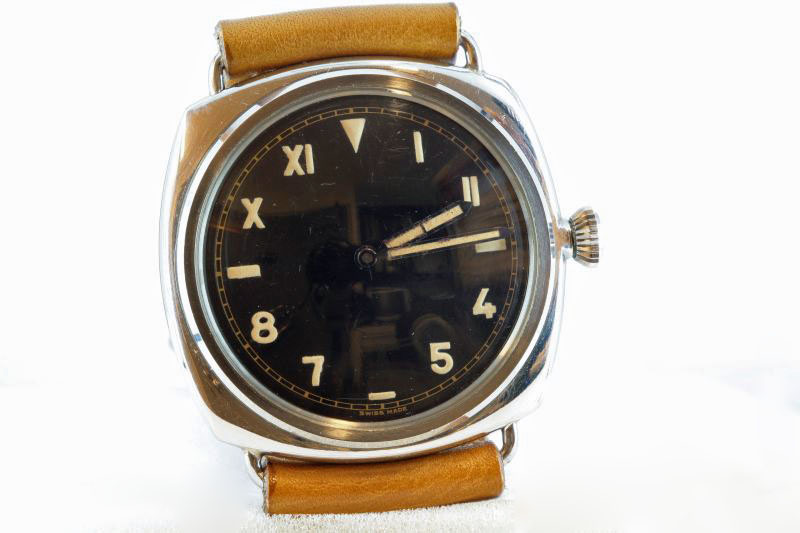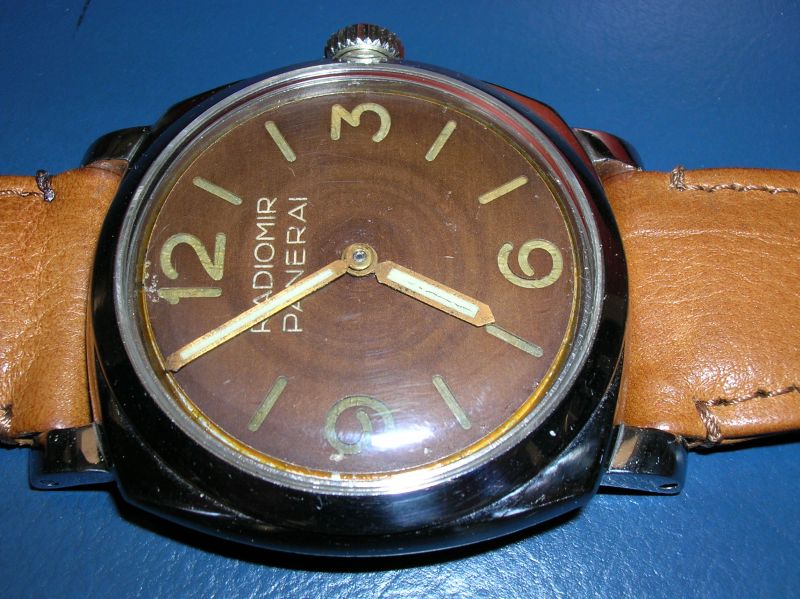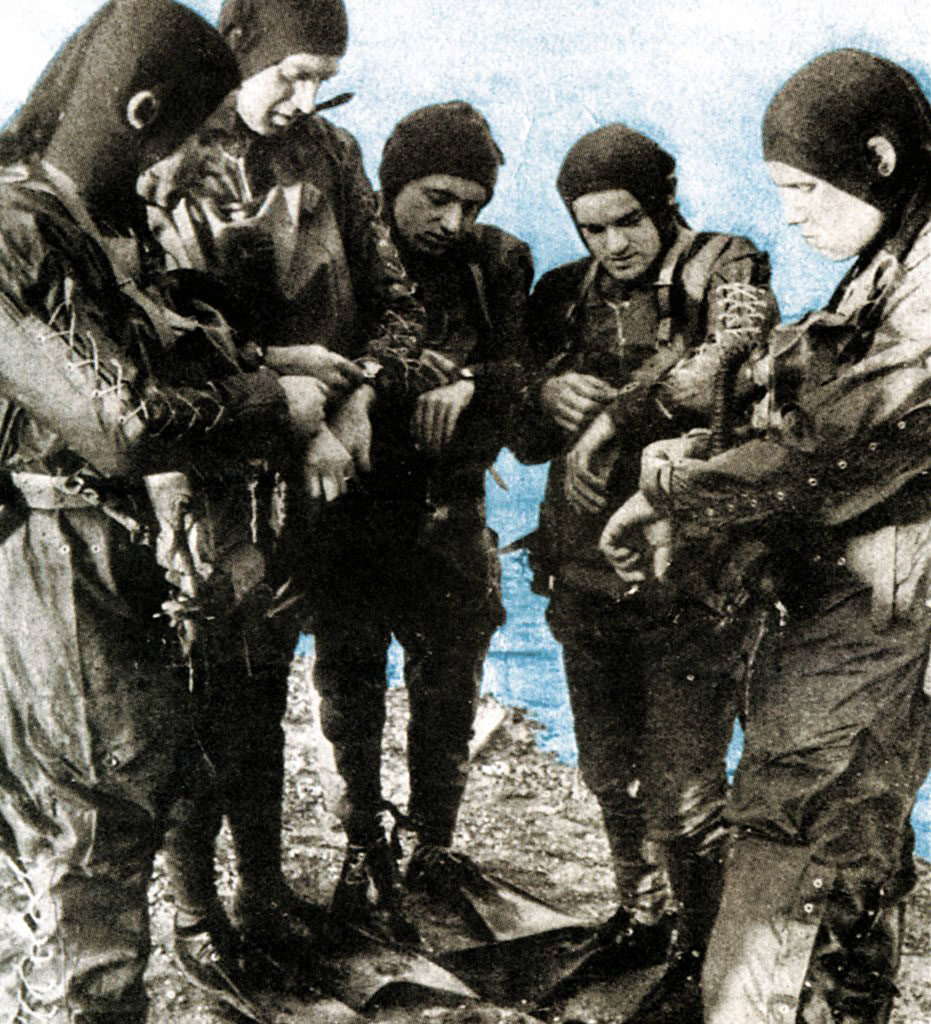
The Panerai Radiomir combat diver watch is actually a Rolex
Share
Shortly before the start of the Second World War, in 1936, Panerai developed ten prototypes for the underwater operations of a special commando of the Italian Navy .
The prototypes featured many of the product features that still characterize the Italian manufacturer's Radiomir collection today: a large, cushion-shaped case, lugs soldered to the case (instead of the "horns" commonly used today), a mechanical hand-wound movement, and—of course—radium-based luminous paint to ensure good legibility for combat divers in the depths of the sea.


Creepy: A combat diver of the Gruppo Gamma in the Second World War, easily recognizable by the “IX” on the Pirelli ARO (auto-respiratory device for oxygen) “Modello 49-bis” .
Historical combat swimmers were, of course, excellently equipped: the watches of these special forces were robust diving watches that had to be particularly easy to read underwater – the exact specifications go back to the requirements of the Italian Navy, which, from 1938 onwards, ordered further small series for its best naval soldiers from Panerai based on the prototypes mentioned above .
During this time, the extremely legible design of the so-called California Dial and the so-called Sandwich Dial were also created.

A sandwich dial consists of two discs placed one above the other with recessed markings and numbers in the upper disc to “focus” and thus enhance the readability of the luminous material underneath.
Even today, the sandwich dial is considered one of the most characteristic features of Panerai watches. 
Even during the Second World War, specifically in 1941, Panerai's Radiomir models were further improved.
For example, the dial design was reduced to a minimum: four Arabic numerals at 12, 3, 6, and 9 o'clock, with line indices in between – apparently, that's all the ship-sinking combat diver needed back then...
-

Radiomir Panerai in the advanced version with classic, more stable horns, Image: Piero7 [Public domain], via Wikimedia Commons -
But it wasn't just the Italian combat swimmers who used Panerai as equipment. Hitler's special forces apparently also got their hands on some watches during World War II, as the following original images demonstrate:
The watches for the Italian Navy were initially not produced by Panerai itself, but by a manufacturer in “neutral” Switzerland: none other than Rolex was commissioned to package the radium dials produced by Panerai into a 47 mm Oyster case, originally intended for pocket watches and incredibly large for the time .
The hand-wound movements at the time came from Stolz Frères SA and Angelus. A clever twist: To make the watch easy to wear on the wrist, lug loops were easily soldered to the Oyster pocket watch case.
The legendary model with the reference 2533 appears in an original Rolex catalog from 1935. It's a direct replica of the Panerai Radiomir (except for the dial). Whether the Rolex 2553 was ever produced is more than a mystery – the model has apparently never been seen in the wild...
Rolex continued to produce watches for Panerai until the mid-1950s. Almost 1,000 diver's watches were produced over the years .
Panerai then resold the watches—along with other equipment such as depth gauges—to the Italian Navy. One of the last Panerai watches produced by Rolex was the Panerai Radiomir, Ref. 6154, produced for the Egyptian army.
Paneristi dubbed the model the small Egiziano – with a diameter of just 30 mm, the model was actually almost tiny compared to the original Oyster cushion case.
Source: chrononautix.com


